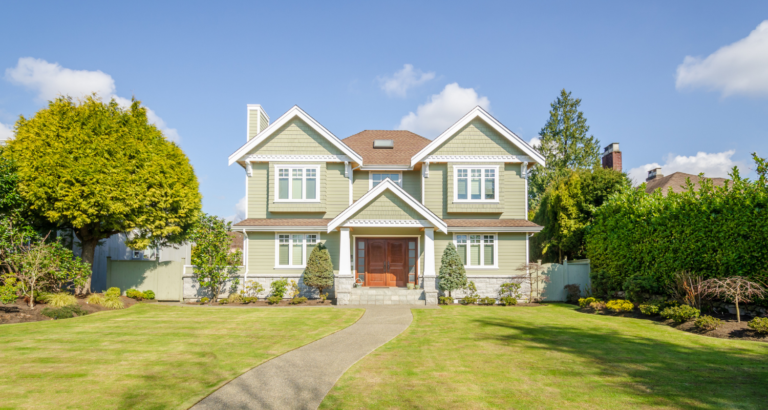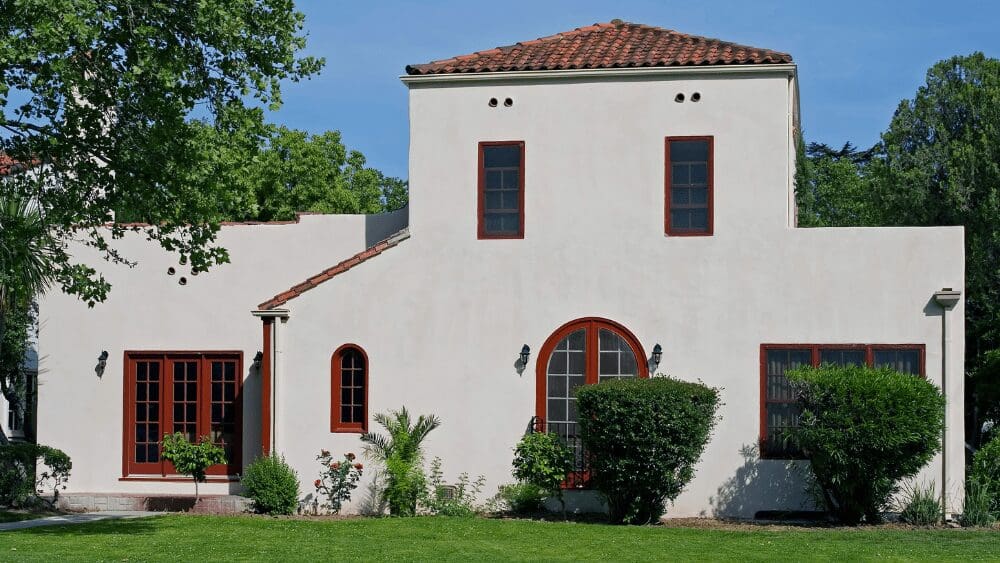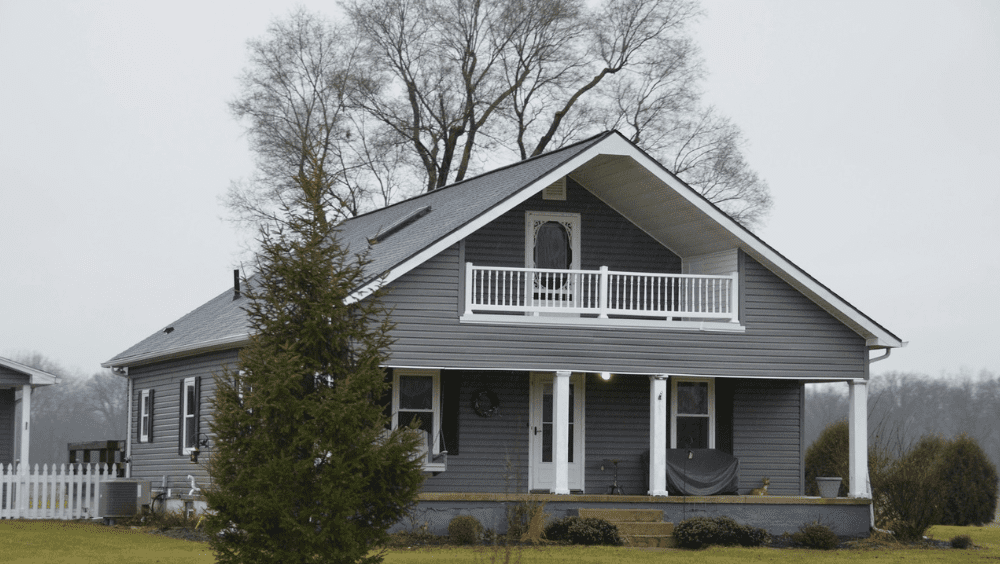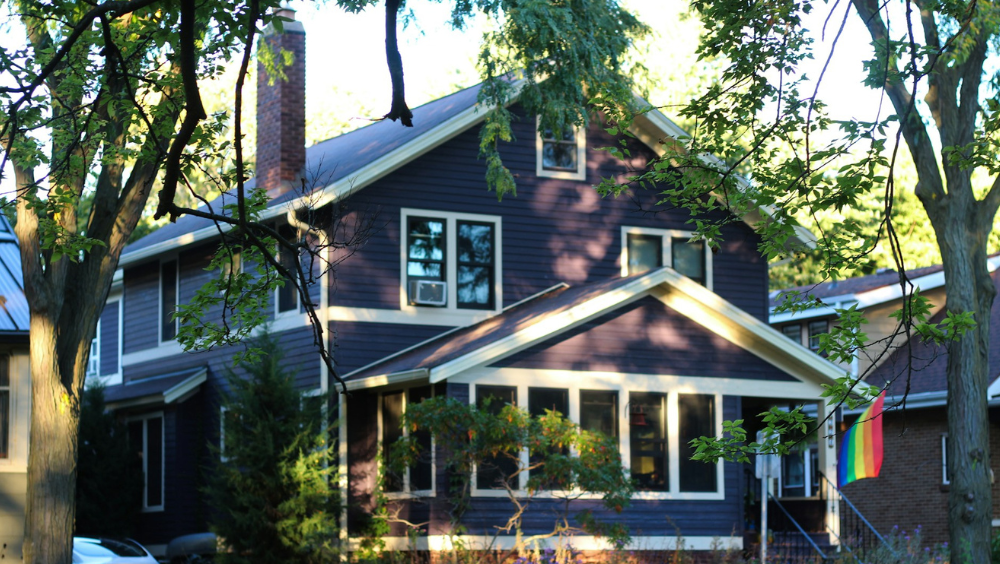
When the time comes to move, some tenacious homeowners are eager to take over the reins of their home sale and figure out how to sell a house by owner. A house is typically a person’s largest financial asset, and the decision to sell solo is often understandably driven by a desire to save on commission fees and pocket more equity from a hard-earned investment. Recently, a blazing hot real estate market and steep rise in equity adds extra incentive to maximize profits. Impulsive home purchases also weren’t unheard of during the pandemic, so maybe you haven’t owned your house very long and are concerned about covering the cost of selling your house. With millions of homes sold each year, a modest portion of sellers — about 7%-8%, historically — choose to list “For Sale By Owner” (or FSBO — pronounced fizz-bow). While the method can work, it does come with some risks. Selling a house is a pretty rare event for most people, so you don’t know what you don’t know. In this 2022 guide to selling FSBO, we’ll cover what can be the most difficult aspects of selling by owner, including the steps that might be harder than you think. We’ll also provide a comprehensive overview on the full process to prep, market, and close on your home without the assistance of a real estate agent.
Note: Once you’ve seen what’s required, you can roll up your sleeves and get started with your FSBO sale. Or — in the event you’d prefer to work with a real estate agent — HomeLight would be happy to introduce you to highly-rated professionals who can help you command top dollar and provide a low-stress selling experience. Disclaimer: While this is a general guide, rules concerning FSBO sales and yard signs may vary state-by-state or even from MLS to MLS, while each state has its own regulations for what sellers are required to disclose to buyers. HomeLight always recommends that you look into the local regulations for your area and when in doubt, consult with a legal advisor. FSBO is a method of selling your home without the involvement of a listing agent. In a FSBO scenario, the seller assumes the responsibilities that would normally fall to their agent such as pricing the home, arranging showings, and negotiating the deal. In an agent-assisted sale, the seller typically pays a commission amounting to around 6% of the sale price, which is then split 50/50 with the buyer’s agent. That 6% is deducted from the seller’s proceeds at closing. By selling FSBO, a seller can eliminate the cost of the listing agent commission (so around 3%), though they may still need to offer a buyer’s agent commission. Buyer’s agents will expect compensation for the work they do to bring a buyer to a sale, such as arrange showings and help to tee up and qualify the buyer. Plus, when a seller isn’t working with an agent, the buyer’s agent may end up carrying more of the weight to get the deal to the finish line. Next: Consult our guide on who pays closing costs when selling a house by owner for more details. Finally, a FSBO sale does not mean that a seller won’t need any professional assistance. Not all states require sellers to hire a real estate attorney, but FSBO sales typically warrant legal and professional oversight of some kind to avoid an abundance of legal risk. Most people who sell by owner will need to hire an attorney to review and prepare key documents and make sure paperwork is filled out properly, such as the seller’s disclosures. The top three reasons people cite for selling FSBO include: “did not want to pay a commission or fee” (36%); sold to a relative, friend, or neighbor (30%); or that the buyers contacted the seller directly (8%), according to data from the National Association of Realtors (NAR). To get a firsthand perspective, we spoke with Heath Fields, who recently closed on a $450,000 home sale in Knoxville, Tennessee — his third FSBO experience. We also spoke with Tracey Todd, a top real estate agent in Gainesville, Florida, who sells homes more than 53% quicker than the average Gainesville agent. Todd says FSBO sellers he encounters want to “make as much money as possible. And they feel like they can do it faster by cutting out the middleman.” However, 2021 data from NAR shows that “FSBO homes sold at a median of $260,000 last year, significantly lower than the median of agent-assisted homes at $318,000.” An independent study from 2016 to 2017 bears this out: FSBO homes sold for an average of 5.5% less than agent-marketed sales. As you can see, FSBO is a mixed bag. So, before the tips, let’s lay out some pros and cons to help you decide if this is the route for you. In spite of the cons, we’ll help you navigate the challenges of FSBO if you’re committed to selling your house without agent assistance. Next, let’s review the FSBO process step by step. Whether you’re selling with an agent or FSBO, at a minimum you’ll want to get your home into respectable shape before any showings to increase your chances of receiving a fair price. Here are a few standard tasks to add to the list. These efforts will go a long way toward impressing buyers: Data from HomeLight’s 2022 Top Agents Insight Report shows that on average, “Buyers will pay 7% more for a house with great curb appeal versus a home with a neglected exterior.” Some important curb appeal upgrades can include: You’ve arrived at a critical moment in your FSBO process: setting a listing price. You don’t want to leave money on the table, yet you want to encourage activity on your listing. Before listing a home, an agent usually conducts a comparative market analysis (CMA). This is a highly-detailed study of “comps” — similar homes nearby that have sold recently, are pending, on the market, or were previously listed but taken off the market. Some may have even been pulled off the market without a sale. Without an agent, you’ll miss out on the complexity of a full CMA and the know-how to interpret it. However, with a little time and money, you can set a competitive price yourself. It’s time to roll up your sleeves and research. As a starting point, look at several online estimators for your home’s value. HomeLight’s Home Value Estimator aggregates publicly available data such as tax records and assessments, your home’s last sale price, and recent sales records for other properties in the same neighborhood.
We also add a new layer of information to our estimates using a short questionnaire. Tell us a few details about your home, such as: Using these insights, we’ll provide you with a preliminary estimate of home value in under two minutes. Whether you use Zillow, Chase, Realtor, or Redfin to get a home value estimate, think of any online home price tool as a first step (not your only source of truth) — and recognize that the data used may be limited. When you’re ready to find comps, you can choose from sites like Zillow, Trulia, Redfin, or Realtor. You’ll want to filter your searches to the area very near your house (within blocks if possible) and with similar characteristics. If you’re not finding any comps, expand your search map. You’ll also want to filter results by details like: Beyond the above criteria, the more houses you find with floor plans and an age similar to yours, the better. As an example, let’s take a look at how to filter your search for comps on Zillow. If you want to further reduce guesswork, Todd recommends paying an appraiser to provide a professional opinion of value for your home. An appraiser will combine recent property data, research of the surrounding market, and information collected from a walkthrough of your home to determine appraised value. For a single-family home, an appraisal will likely cost $500 to $600 — well worth it to avoid possibly over- or underpricing your house by thousands. Compare your home’s features against the nearby comps you collected. Hopefully, the houses you studied give an indication of an appropriate price range for your home. From there, you can make dollar adjustments based on characteristics that add value (patios, curb appeal, an extra bedroom) versus detract from it (a busy street, deferred maintenanced, less square footage). Consider the differences and similarities of comps with the appraised value of your home to choose a price that will encourage activity (too high and it may seem out of reach to many buyers) but will also maximize your profit. Listing photos are powerful, either pulling in buyers for showings or keeping them away. To give your listing an edge, consider hiring an experienced real estate photographer. While they may charge as much as $100 to $125 an hour, “putting in my time to have professional pictures taken of my home was worth it,” says Fields. But if you do go the DIY route, make sure to: Review our guide on how to take quality real estate photos for further guidance. Along with stellar photos, you’ll want to craft an informative and compelling listing. Leverage both the listing description (a paragraph or two highlighting key features) and the property details to show potential buyers all about your home and what makes it desirable. Draw in potential buyers with a powerful listing description which tells a story about your house, including details like: Lastly, and this is crucial: specify in your description whether a buyer’s agent will receive commission from the proceeds. Most agents don’t want to show their clients properties from which they’d receive no commission. You can decide not to offer a buyer’s agent commission, but recognize that doing so could limit your buyer pool as buyer’s agents typically expect to be compensated for their efforts. Aside from writing the description, you may be prompted to enter information like: Many real estate agents and potential buyers really do read this “fine print” on your listing — so include accurate details, and plenty of them. It’s finally time to post your home online. While you can create FSBO listings for free on popular search sites, you’d have to painstakingly post site by site, and your listing wouldn’t reach the majority of buyers and agents. To give your home the most exposure, pay to have your home put on your local MLS (multiple listing service) -– a platform agents use to share properties with one another as well as major real estate sites. Posting there will feed your listing to buyers’ agent databases and to common sites buyers use. Only licensed real estate agents and brokers who are MLS members can post to the MLS. However, you have two options to gain access: paying an agent to post for you or using a FSBO platform online. A local agent may be willing to list your house on the MLS for a flat fee, without any other involvement in your real estate transaction. If you decide to go this route, make sure you ask whether the fee includes updating your listing if necessary. There are a variety of paid FSBO websites that allow you to list your house online, with packages ranging from about $100 to $400. Whatever you choose, read the fine print carefully: some sites may have hidden fees or even take a percentage off your sale – a detour you’d rather avoid on the FSBO route. If you’re determined to save money by foregoing the MLS, creating a free FSBO listing on Zillow may be your top option. You can post video and unlimited photos, and get fairly wide exposure via Zillow and the Zillow-owned Trulia. Time to spread the word. “Marketing,” Todd advises, “is still key even in the hottest markets in the world.” So, beyond listing on the MLS, what else can you do to market your home? Consider getting a custom yard sign rather than purchasing a generic one you write on with Sharpie. You can order a custom sign on a site like Vistaprint with your contact information, plus a stand, for as little as $25 plus shipping. Note that some MLSs may have rules about whether you can post a FSBO yard sign while your home is on the MLS. Fields says that “having great relationships with people on social media who shared the listings” was a key factor in his FSBO success. So be sure to share your home across social media – and ask your friends to share, too. Try these strategies for a successful open house event: Here are more tips for how to do an open house. Score! The marketing worked, and your phone is buzzing. Welcome to the busiest phase of the process. In fact, according to Todd, a major reason some FSBO sellers switch to an agent is that “they underestimated the time and energy they would have to spend managing the noise.” To manage the logistics of showings: If you’d rather not be present for every showing, consider using a lockbox with a code to let buyers’ agents enter the house. This is standard industry practice among agents. To ensure you’re working with someone legitimate, use Google to check their real estate license number. With unrepresented buyers, plan to be on the property for the showing. During a showing, we recommend you: You’ve got your first offer — congratulations! Before signing anything, here are key considerations: Time to button up that deal. Todd recommends every FSBO seller hire a lawyer to minimize risk and settle the legal documents. Real estate attorney fees vary widely depending on location and how much help you want. Generally, they range from $150 to $350 per hour — well worth it for professional guidance in closing one of life’s largest legal transactions. On your FSBO journey, watch out for these major pitfalls: Lastly, “don’t get greedy,” Fields cautions. In his case, he turned down a full-price cash offer the first day thinking he might get more. After another month, Fields accepted and closed on a different full-price cash offer — wishing he’d saved himself that extra month of work. If you decide you don’t want the hassle or pressure of FSBO, you’ve got other solid options. Ultimately, the services and price gains you can get with an experienced real estate agent may put more money in your pocket than FSBO. Todd tells the story of a FSBO seller-turned-client whose home sat on the market for 180 days. After lowering the price a total of $50,000, the seller asked for Todd’s help. A walkthrough revealed carpet in a bathroom and other little things the seller hadn’t improved. “If you put about $7,000 to $10,000 back into your home,” Todd advised the seller, “we can list it for about 20 to 30 grand (above) what you previously had.” Todd promised the skeptical client that if he was wrong, he’d reimburse the $10,000. Ultimately, after 30 days to make the recommended updates, the home “sold for $10,000 above what they had originally asked for, and it was under contract in 10 days.” Interested in such expertise? We offer a 100% free agent matching service tailored to your needs to help you find an expert local agent. It takes only two minutes to receive your matches. If you’d like to skip the sale prep altogether — plus avoid paying agent commissions — you can opt to sell your home “as-is” to an all-cash buyer instead. For a low-stress experience, consider requesting a cash offer from HomeLight’s Simple Sale platform. Tell us a few details about your home, and in as few as 48 hours, we’ll send an offer your way. If you decide to accept the offer, Simple Sale sellers have the ability to close in as little as 10 days.
Without leaving the Simple Sale platform, you’ll also be able to compare your cash offer to an estimation of what your home would sell for on the open market so you can make an informed decision. Unless you already have a buyer lined up, selling a house by owner requires a significant investment of time and effort. You’ll need to pull your own comps, capture excellent pictures, create a listing, market the house online, field inquiries, negotiate, and close the deal. And that’s after preparing the house itself. You also have to consider that FSBO listings tend to sell for less than agent-assisted sales. An experienced agent who knows the area can make recommendations for targeted upgrades to help you maximize your sale price and get a premium offer. This can help to offset or, in some cases, more than make up for the cost of commission — while saving you time and headaches. If you chose to go FSBO, you should have a good idea now of what to expect from the process. Otherwise, our internal transaction data at HomeLight shows that the top 5% of real estate agents sell homes for as much as 10% more than average, and we’d be happy to make an intro to some of the best agents near you.How does selling by owner (FSBO) work?
Why sell a house by owner?
Pros of selling a house by owner
Cons of selling a house by owner
Steps to sell a house by owner
1. Prepare your house for sale
Indoors
Outdoors
2. Do the homework necessary to set a competitive price
Conduct your own “CMA Lite”
Start with an online home value estimate
Narrowly filter your search for comps
Use a site like Zillow to collect your data
Invest in an appraisal
Make sense of the research
3. Photograph your home
4. Create a detailed, compelling listing
Tell a story with your description
Don’t skimp on the property details
5. List your home online
Pay an agent to list your home on the MLS
Use a FSBO platform with an MLS option
Not willing to pay for the MLS?
6. Market your home
Place a nice FSBO sign by the road
Share on social media
Hold an open house
7. Manage showings
Should you be present for showings?
8. Evaluate offers and negotiate a deal
9. Close the sale — with professional help
FSBO mistakes to avoid
Alternatives to selling by owner
Enlist the help of a top-rated real estate agent
Request a cash offer
Ready to sell your home?



